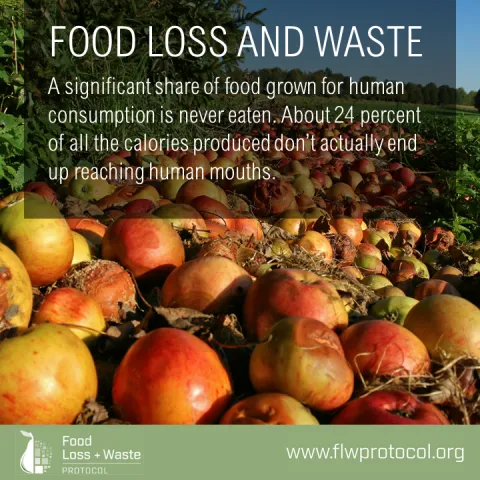The new global Food Losses and Waste FLW standard for measuring food loss and waste is the first set of international definitions and reporting requirements for businesses, governments and other organisations specifying how they should measure and manage food loss and waste, as a step towards helping countries and companies improve efforts to store, transport and consume food more efficiently.

The purpose of the FLW Standard is to encourage consistency and transparency in quantifying and reporting on the amount of food and/or associated inedible parts removed from the food supply chain—commonly referred to as “food loss and waste.”
Companies, countries or cities often lack information about how much, why and where food is removed from the supply chain. Definitions of food loss and waste also vary widely, making comparisons difficult.
Development of the standard has been led by the World Resources Institute, Consumer Goods Forum, the FAO, the United Nations Environment Programme (UNEP) and the World Business Council for Sustainable Development (WBCSD).
Food losses and waste globally cost up to $940 billion per year and generate about 8 percent of ‘avoidable’ global greenhouse gas emissions – avoidable in the sense that the food is ‘unnecessarily’ produced, since it is not eaten, and if it were not produced the emissions associated with its production, distribution and so forth could be avoided. The report says that if it were a country, food loss and waste would be the third-largest greenhouse gas emitter behind China and the United States.
You can read more about the standard here. See further coverage here
See more in the category on waste and resource use, and the keyword category food waste and waste in the research library.




Comments (0)